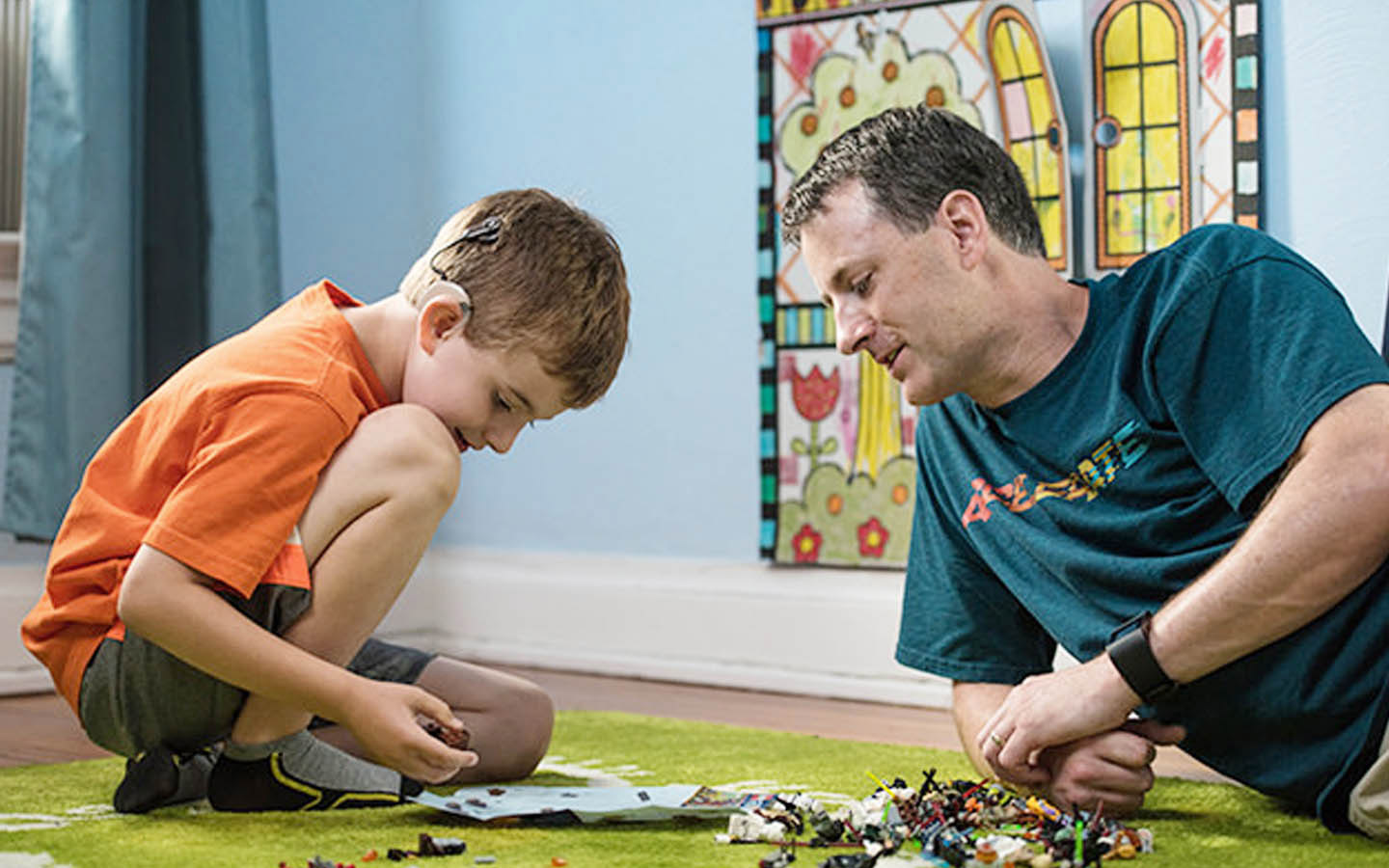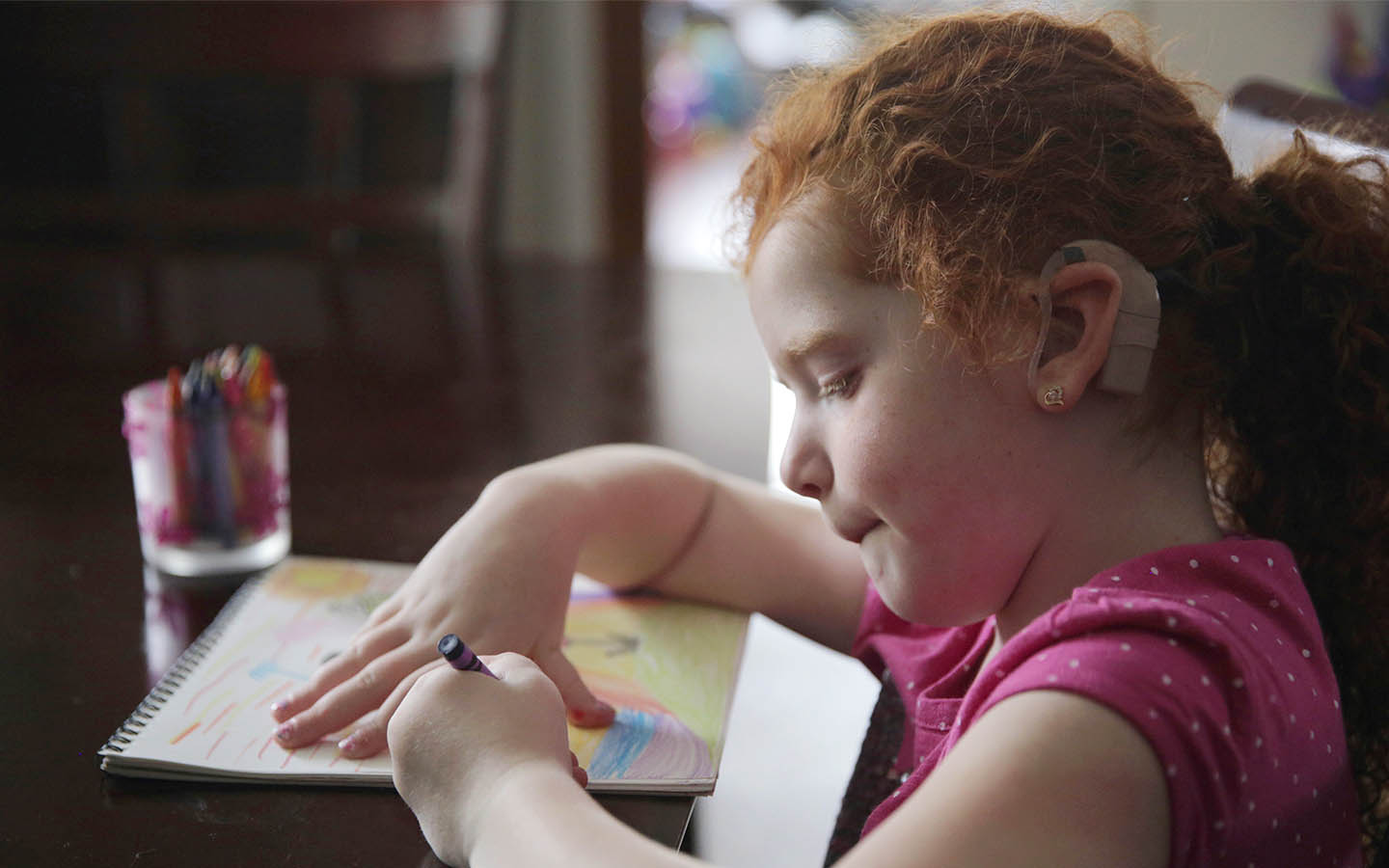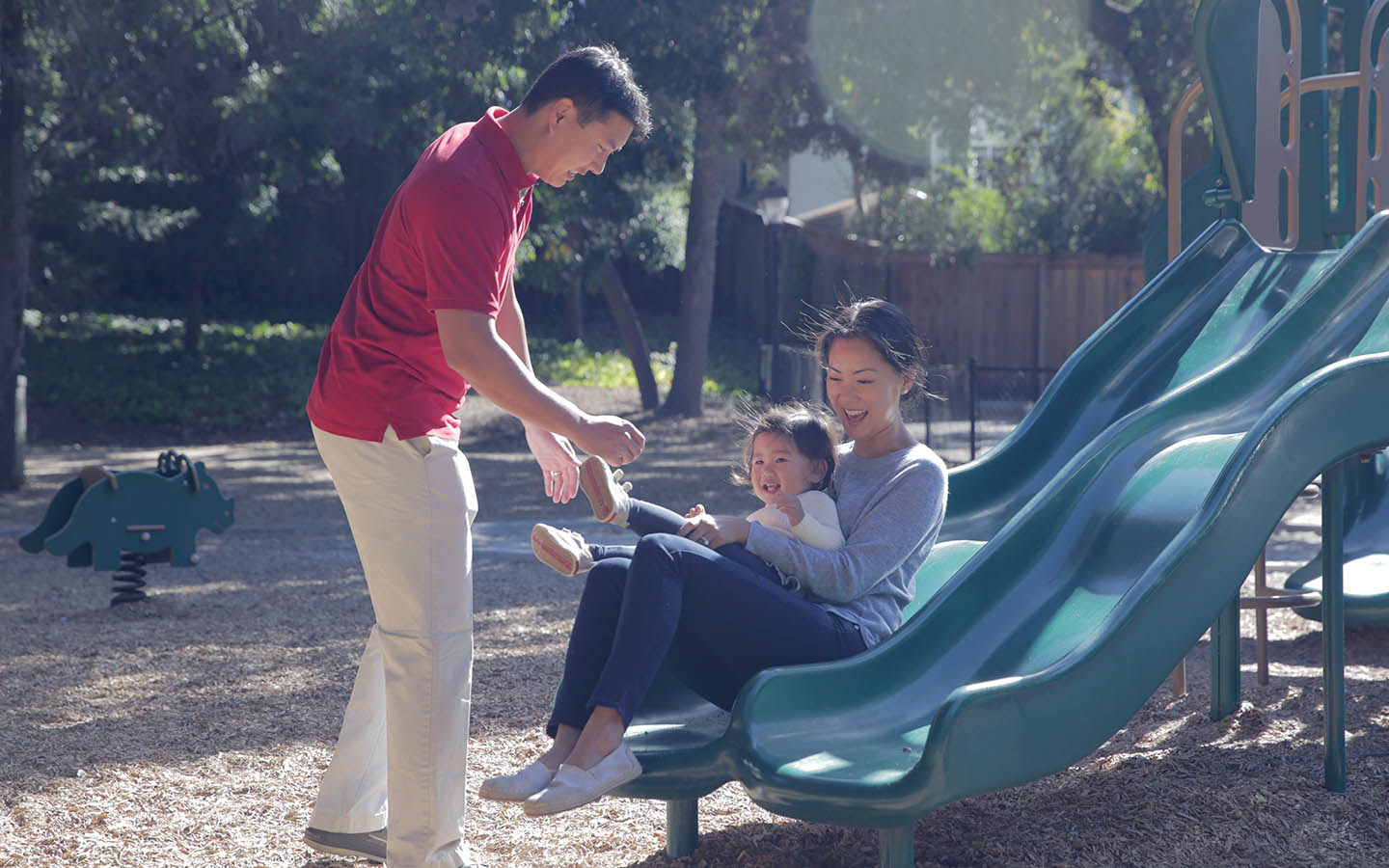Early intervention for children
Learn why it's important to treat your child's hearing loss as soon as possible.

What you'll find on this page
- The link between hearing and brain development.
- Why treating hearing loss early helps children to develop.
- Advice from parents who acted early.
If your child has hearing loss, getting treatment sooner rather than later can have many benefits. These include laying the foundation for fundamental language, which allows them to develop social skills and help them succeed in school.1,2
Why treating hearing loss in children early is important
Hearing is the process of sound travelling through your child's ears, but it's actually their brain that interprets what they hear. Providing their brain with the stimulation it needs at an early age can enable them to achieve their best speech, language and social skills.1
The power of language
Babies and children learn to talk by listening to their parents and the world around them. When infants babble, it's part of their language development; they're experimenting with communication and mimicking the words they hear.
Hearing is essential to their language development6, which affects how they interact with others and how they perform at school.
The earlier you treat hearing loss, the better chance your child will have to develop language equivalent to a normal-hearing child. Children who received cochlear implants at six months old display stronger language skills compared to those treated when they were two years old.3
"He gets to go to the gifted program. For someone who has hearing loss, it's even more amazing!"*¹
- Parents of Patrick, Cochlear™ Nucleus® recipient
Hearing at school
Treating your child's hearing loss early may help them thrive at mainstream schools alongside their peers.3
Benefits may include:
-
possibly making new friends easily4
-
keeping up with other children3
-
better communication with teachers and classmates3
-
attending mainstream schools.5
Your hearing health professional will recommend the best options to treat your child's hearing loss. They can also point you to support groups and resources to help you and your family.
Find a hearing implant specialist near you
Disclaimer
Please seek advice from your health professional about treatments for hearing loss. Outcomes may vary, and your health professional will advise you about the factors which could affect your outcome. Always follow the directions for use. Not all products are available in all countries. Please contact your local Cochlear representative for product information.
For a full list of Cochlear’s trademarks, please visit our Terms of Use page.
*1 Views expressed are those of the individual. Consult your health professional to determine if you are a candidate for Cochlear technology.
References
- Ching TYC, Dillon H, Leigh G, Cupples L. Learning from the Longitudinal Outcomes of Children with Hearing Impairment (LOCHI) study: summary of 5-year findings and implications. Int J Audiol. (2018;May); 57(sup2).Effects of Hearing Loss on Development. American Speech-Language-Hearing Association (ASHA) [Internet]. 2013 [Cited 2013 July]. Available from ASHA.
- Geers AE and Nicholas JG. Enduring advantages of earlier cochlear implantation for spoken language development. J Speech Lang Hear Res. (2013 Apr); 56(2).
- Ching TYC, Dillon H, Button L, Seeto M, Van Buynder P, Marnane V, Cupples, L, Leigh G. Age at Intervention for Permanent Hearing Loss and 5-Year Language Outcomes. Pediatrics. (2017 Sep); 140(3)
- Sarant JZ, Harris DC, Galvin KL, Bennet LA, Canagasabey M, Busby PA. Social development in children with early cochlear implants: normative comparisons and predictive factors, including bilateral implantation. Ear Hear. (2018 Jul/Aug); 39(4):770-782.
- Semenov, YR, Yeh, ST, Seshamani, M, Wang, N-Y, Tobey, EA, Eisenberg, LS, Quittner, AL, Frick, KD, Niparko, JK, CDaCI Investigative Team. Age-Dependent Cost-Utility of Pediatric Cochlear Implantation. Ear Hear. (2013 Feb); 34(4):402-412.
- Ching, T. Y., Crowe, K., Martin, V., Day, J., Mahler, N., Youn, S., Street, L., Cook, C., & Orsini, J. (2010). Language development and everyday functioning of children with hearing loss assessed at 3 years of age. International journal of speech-language pathology, 12(2), 124–131






